
Bands of hungry primeval men hunt gigantic prehistoric creatures in these fanciful Cup Noodle commercials from the early '90s. (Stop-motion animation by Kim Blanchette.)
[More here, including a mammoth, pterodactyl and giant warthog.]

Bands of hungry primeval men hunt gigantic prehistoric creatures in these fanciful Cup Noodle commercials from the early '90s. (Stop-motion animation by Kim Blanchette.)
[More here, including a mammoth, pterodactyl and giant warthog.]
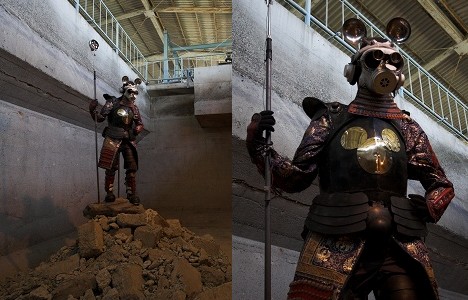
Mickey the Knight, a sculptural work by visionary neo-pop artist Yanobe Kenji, is a mouse-eared, gas-masked, fully-armored warrior who looks like a mutant samurai member of the Mickey Mouse Club.
According to Yanobe's notes, which were on display along with Mickey the Knight at a recent Yokosuka Museum of Art exhibit, he was invited to submit a Disney-themed piece for Disneyland's giant 50th anniversary celebration held in 2005. Known for work that explores issues like how to survive and have fun in post-apocalyptic settings, Yanobe drew inspiration from the legendary Mickey Mouse Gas Mask, an intriguing historical artifact whose background story reflects some of the themes found in Yanobe's work.
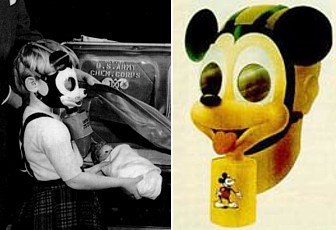 The Mickey Mouse Gas Mask was manufactured in 1942, at a time when segments of the American population, particularly those in Hawaii, feared a potential gas attack by the Japanese. With the permission of Walt Disney himself, 1,000 of the masks were produced for the US Army, who distributed them to civilians in the hope that the friendly, toy-like design would encourage children to carry them around and wear them for longer periods of time should an actual attack ever occur, thus improving their chances for survival. Apparently, this concept inspired Yanobe to create Mickey the Knight.
The Mickey Mouse Gas Mask was manufactured in 1942, at a time when segments of the American population, particularly those in Hawaii, feared a potential gas attack by the Japanese. With the permission of Walt Disney himself, 1,000 of the masks were produced for the US Army, who distributed them to civilians in the hope that the friendly, toy-like design would encourage children to carry them around and wear them for longer periods of time should an actual attack ever occur, thus improving their chances for survival. Apparently, this concept inspired Yanobe to create Mickey the Knight.
Unfortunately, however, Disney was not impressed with Yanobe's creation, and the big anniversary celebration passed without an invitation. Now, Mickey the Knight can be seen on occasion hanging out at museums and galleries. (The top photo shows Mickey the Knight at an installation in an old factory in Ibaraki prefecture, which was part of the Toride Art Project 2006.)
These videos by Ne-o feature unique spatial-temporal visual tricks spiced with dark humor and slices of mundane-but-fantastic Tokyo scenery.
Futureshock -- "Late at Night": Music video with some great night scenery, featuring an unlikely cast of nocturnal characters doing a crazy body-popping dance.
Humanity: Man merges with machine in this Toyota CM for an automobile with a very human touch. This film won the 2006 Cannes Silver Lion.
Salaryman 6: A salaryman trapped in a routine, day-to-day existence loses his memory. The film is shot in ultra-widescreen format to capture the drama of the futuristic Tokyo cityscape, and while some of the cinematic beauty may shine through on your paltry YouTube window, this was clearly meant for the big screen.
B3: A weird trip through a deserted underground parking garage, created from still photos using 3D composting and morphing techniques.
[Link: Ne-o]
In the first step in its international rollout, YouTube has launched localized versions of its video sharing site in nine countries -- Brazil, France, Ireland, Italy, the Netherlands, Poland, Spain, the UK and Japan. YouTube Japan, which now has a fully translated interface and a local listing of recommended videos, is now featuring a welcome video by Tokyo-based art collective Rinpa Eshidan, whose killer "motion painting" videos have a history of rocking YouTube.
Watch more Rinpa Eshidan videos HERE.
[Link: YouTube Japan]
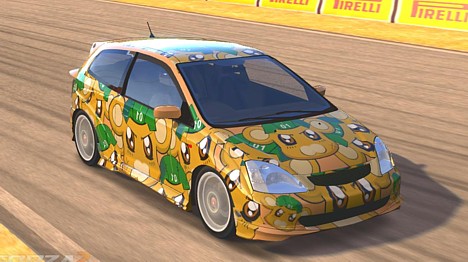
Since the release of the Forza Motorsport 2 racing sim for Xbox 360 several weeks ago, players worldwide have been using the in-game custom paint function to create incredible designs for their cars, which they can either race online or buy, sell and trade through the game's virtual auction house. Japan?s digital racers have been in on the fun from the start, turning their virtual rides into magnificent itasha that scream otaku pride.
Here are links to two enormous online galleries (Gallery 1, Gallery 2) of virtual otaku-mobile paint jobs incorporating loads of Japanese-flavored eye candy, from anime and manga to games, food packaging and more. What makes these detailed paint jobs even more impressive is the fact they are created entirely with the game's basic paint tools -- a limited selection of vector shapes that can be colored, scaled, rotated and layered endlessly to create complex designs. Graphics cannot be imported from external sources, so everything is created manually step by step in what is undoubtedly a time-consuming process.
Here's a tiny sample of some of the work found in the galleries:
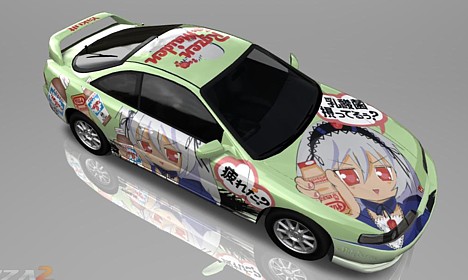
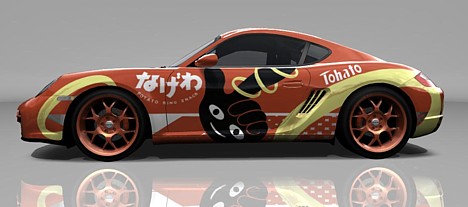
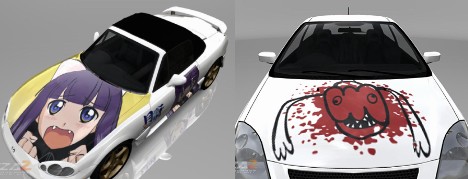
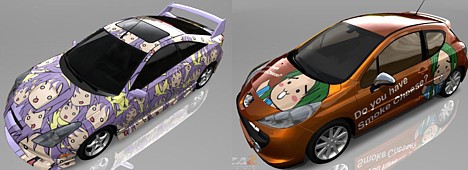
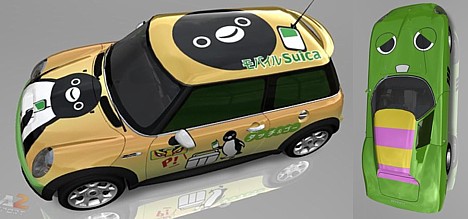
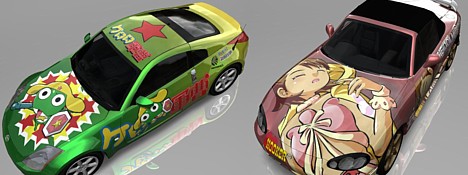
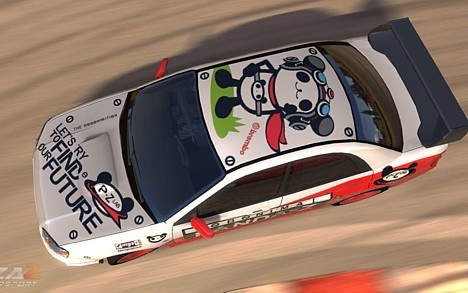

For a quick trip to inner space, check out Gate Vision, a video by Kazuhiko Kobayashi. Using software to convert Shinkansen bullet train footage into a circular image, Kobayashi creates a hyper-psychedelic video mandala that mutates along with the rapidly changing scenery. The first minute shows the train's departure from the platform, and the rest shows the kaleidoscopic scenery from the window as the train cruises toward Tokyo station. To fully appreciate the mind-bending sound of Shinkansen space travel, it is best to view this with powerful speakers (or headphones).
You can check out Kobayashi's website for more videos and visit his scan Gate gallery for lots of awesome photo mandalas.
Buckle up and check out these photo links for a glimpse into the world of Japanese vanning.
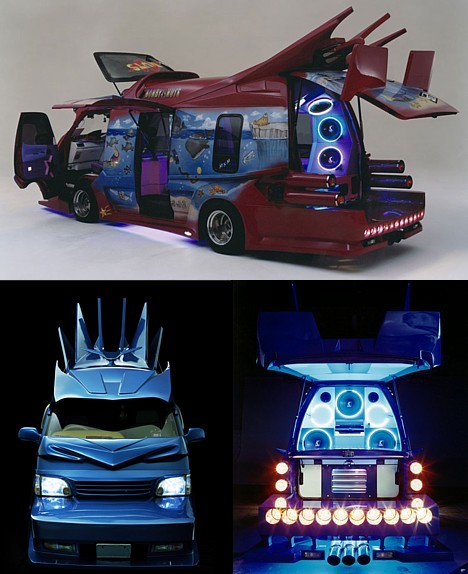
- Satoshi Minakawa: Incredible studio shots by Satoshi Minakawa. (Go to the "Conceptual 02" gallery and scroll to the right. Be patient with the Flash interface -- it's worth the wait.)
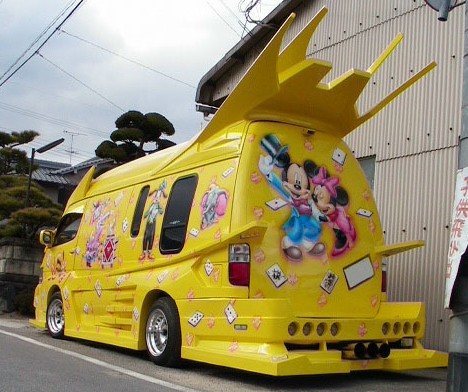
- 1.st Air Brush & Body Work: Photos of amazing work by a custom body shop, featuring lots of cartoon and anime-themed airbrush designs. Who says mean machines can't look cute?
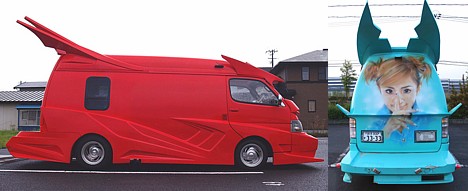
- Bizarro's World: IwateBuddy's Flickr photoset of tricked out vans spotted in his neck of the woods. The van on the right (above) sports an airbrush of pop diva Ayumi Hamasaki.
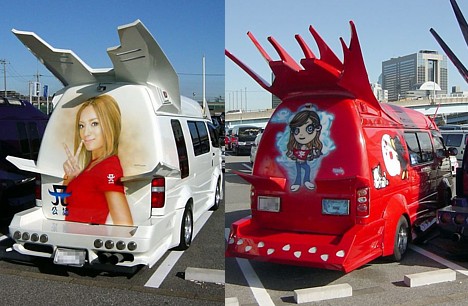
- Blue Style: About 10 more photos of pimped rides showing love for Ayumi. (To view the photos, look for the "Gallery" section in the sidebar and click the 4th link from the bottom.)
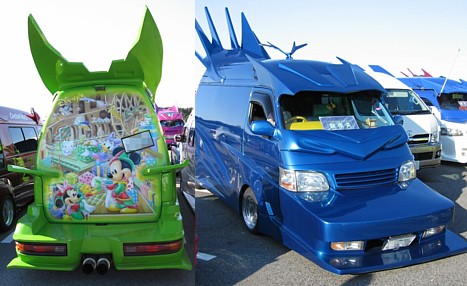
- Blue Style blog: A few more good ones. Disney never looked so damn hot!
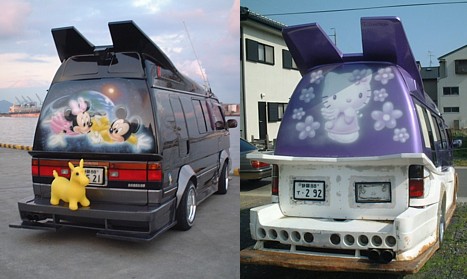
- Vanning House: Several dozen photos here, including a nice shot of a loungy interior... and a pimpin' Hello Kitty van. (To access the gallery, click on the second link (orange text) from the left.)
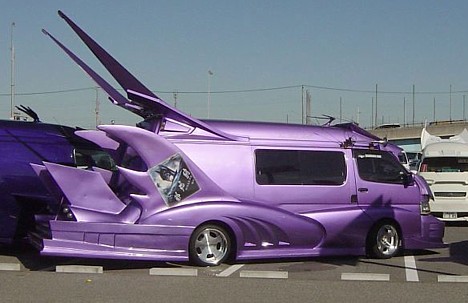
- Strange Vehicles: A few more extreme Japanese vans from a variety of sites.

KEIZOmachine! and Juicy -- together known as Hifana -- began as belly dance percussionists in the late '90s, but now they rely on electronics for their sample-heavy, scratchy hip-hop/breakbeat sound. They have some wild animated videos created by "hybrid" music label W+K Tokyo Lab.
Wamono -- From their "Channel H" CD+DVD, 2005
Fatbros -- From their "Fresh Push Breakin'" CD, 2003
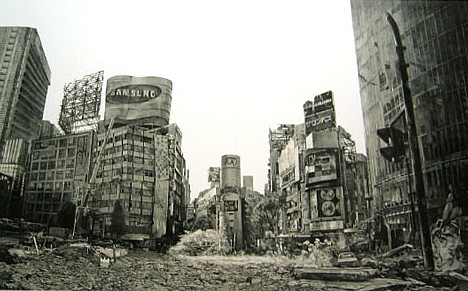
Shibuya Center Town
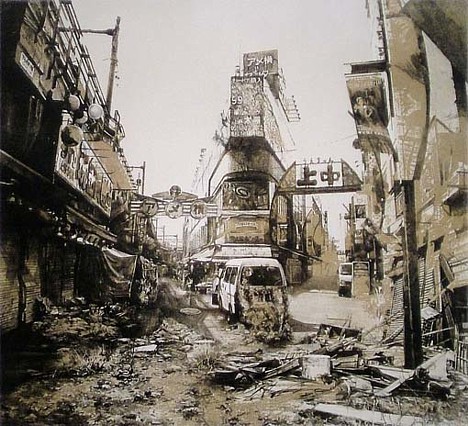
Ameyoko
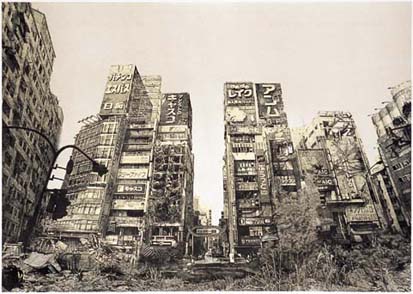
Kabukicho
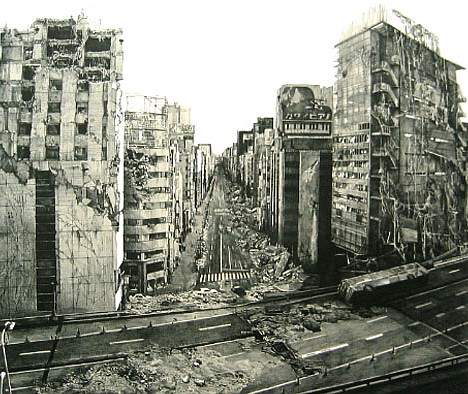
Ginza Chuo Dori
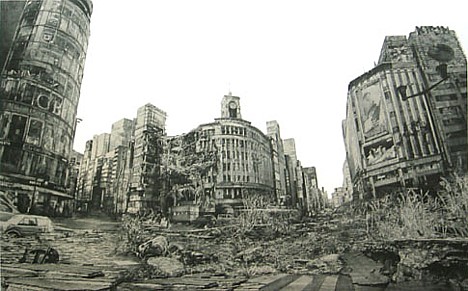
Ginza 4-chome Intersection
Hisaharu Motoda's "Neo-Ruins" series of lithographs depict the cityscape of a post-apocalyptic Tokyo, where familiar streets lie deserted, the buildings are crumbling and weeds grow from the broken pavement. The antique look of the lithographic medium effectively amps up the eeriness of the futuristic setting. "In Neo-Ruins I wanted to capture both a sense of the world's past and of the world's future," says Motoda on his website.
[Link: Hisaharu Motoda]